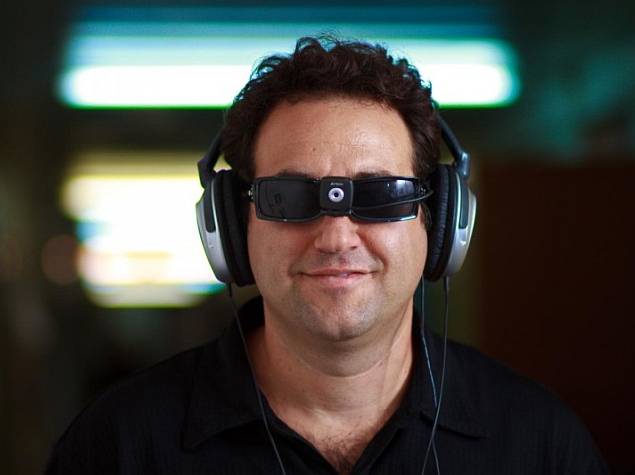- Home
- Science
- Science News
- New Devices Help the Blind 'See' via Other Senses: Study
New Devices Help the Blind 'See' via Other Senses: Study

Using first-of-the-kind devices, Israeli scientists have mapped brains of the blind to solve how our brains can adapt to the rapid cultural and technological changes of the 21st century.
The tools, known as Sensory Substitution Devices (SSDs), take information from one sense and present it in another.
For example, they enable blind people to "see" by using other senses such as touching or hearing.
By using a smartphone or webcam to translate a visual image into a distinct soundscape, SSDs enable blind users to create a mental image of objects, such as their physical dimensions and colour.
"These devices can help the blind in their everyday life," explained professor Amir Amedi from Hebrew University's Amedi Lab for Brain and Multisensory Research.
With intense training, blind users can even "read" letters by identifying their distinct soundscape.
"These devices also open unique research opportunities by letting us see what happens in brain regions normally associated with one sense, when the relevant information comes from another," he added.
For the study, the researchers used functional MRI imaging (fMRI) to study the brains of blind subjects in real-time while they used an SSD to identify objects by their sound.
They found that when it comes to recognising letters, body postures and more, specialised brain areas are activated by the task at hand, rather than by the sense (vision or hearing) being used.
"This means that the main criteria for a reading area to develop is not the letters' visual symbols but rather the area's connectivity to the brain's language-processing centres," Amedi noted.
Similarly a number area will develop in a region which already has connections to quantity-processing regions, he added.
The findings suggest that unexpected brain connectivity can lead to fast brain specialisation, allowing humans to adapt to the rapid technological and cultural innovation of our generation.
"If we take this one step further, this connectivity-based mechanism might explain how brain areas could have developed so quickly on an evolutionary timescale," the authors concluded.
The research appeared in the journal Nature Communications.
Get your daily dose of tech news, reviews, and insights, in under 80 characters on Gadgets 360 Turbo. Connect with fellow tech lovers on our Forum. Follow us on X, Facebook, WhatsApp, Threads and Google News for instant updates. Catch all the action on our YouTube channel.
Related Stories
- Samsung Galaxy Unpacked 2025
- ChatGPT
- Redmi Note 14 Pro+
- iPhone 16
- Apple Vision Pro
- Oneplus 12
- OnePlus Nord CE 3 Lite 5G
- iPhone 13
- Xiaomi 14 Pro
- Oppo Find N3
- Tecno Spark Go (2023)
- Realme V30
- Best Phones Under 25000
- Samsung Galaxy S24 Series
- Cryptocurrency
- iQoo 12
- Samsung Galaxy S24 Ultra
- Giottus
- Samsung Galaxy Z Flip 5
- Apple 'Scary Fast'
- Housefull 5
- GoPro Hero 12 Black Review
- Invincible Season 2
- JioGlass
- HD Ready TV
- Laptop Under 50000
- Smartwatch Under 10000
- Latest Mobile Phones
- Compare Phones
- Honor Win RT
- Honor Win
- Xiaomi 17 Ultra Leica Edition
- Xiaomi 17 Ultra
- Huawei Nova 15
- Huawei Nova 15 Pro
- Huawei Nova 15 Ultra
- OnePlus 15R
- Asus ProArt P16
- MacBook Pro 14-inch (M5, 2025)
- OPPO Pad Air 5
- Huawei MatePad 11.5 (2026)
- Xiaomi Watch 5
- Huawei Watch 10th Anniversary Edition
- Acerpure Nitro Z Series 100-inch QLED TV
- Samsung 43 Inch LED Ultra HD (4K) Smart TV (UA43UE81AFULXL)
- Asus ROG Ally
- Nintendo Switch Lite
- Haier 1.6 Ton 5 Star Inverter Split AC (HSU19G-MZAID5BN-INV)
- Haier 1.6 Ton 5 Star Inverter Split AC (HSU19G-MZAIM5BN-INV)

















